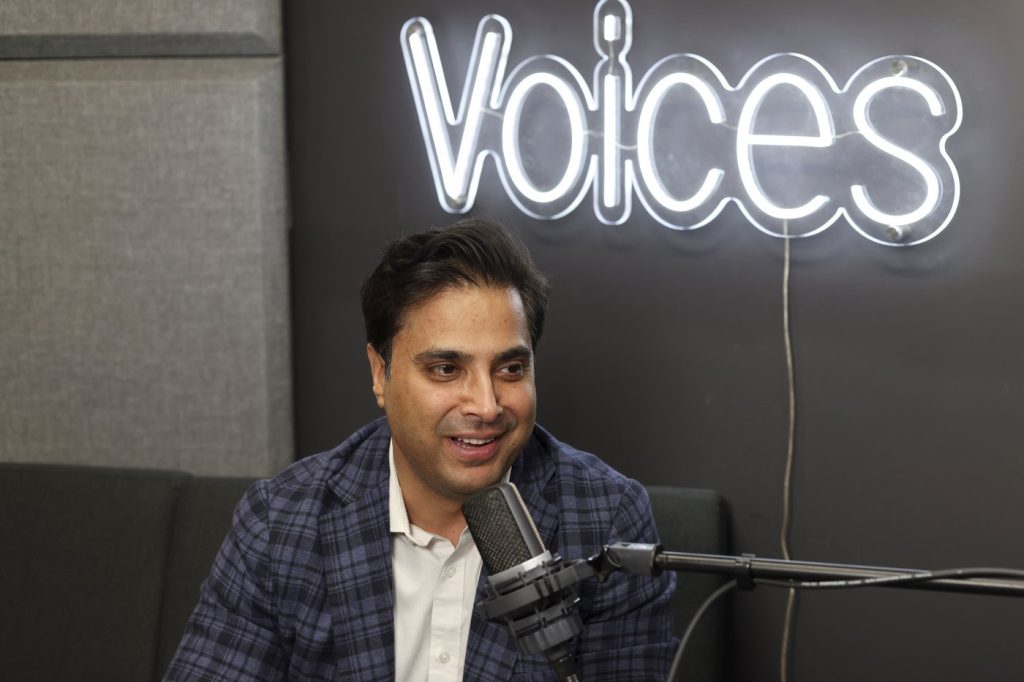Voiceover actor Jesse Adam from Saskatchewan has expressed concerns about the rapid rise of artificial intelligence (AI) in the voiceover industry. With advancements in AI technology producing increasingly convincing voice renditions, Adam recognizes the potential threat to his profession. He mentions that he has come to terms with the inevitability of AI's presence in the industry, leading him to adapt rather than resist these changes.
Adam, who has been in the voiceover field for over a decade and has worked on various projects including Marvel video games and Starbucks commercials, has embraced AI through his collaboration with Voices.com. This London, Ontario-based platform introduced an AI Studio initiative that allows clients to purchase clones of actors' voices for text-to-speech applications. Adam willingly opted into this initiative, hoping that his AI-generated voice could generate passive income, enabling him to focus on his passion projects.
To create a range of emotional performances necessary for the AI service, Adam invested approximately 20 hours in recording. Since the initiative began, he has completed around 100 jobs, primarily for training videos, receiving notifications each time his AI-savvy voice is used. While he acknowledges that the earnings from this AI venture are modest—about 10 cents per word, as compared to his typical direct-client projects—he remains optimistic about potential growth as demand scales up.
Dheeraj Jalali, the chief technology officer of Voices.com, states that about 30 voice actors have participated in the AI Studio program, which was launched to utilize evolving AI technology rather than thwart it. Each actor controls their per-word rates and can dictate which words or phrases their AI clones should avoid. After their voices are utilized, they can also view scripts related to the usage. Jalali assures that traditional hiring for commercials and media continues as AI lacks the ability to interpret artistic direction effectively, emphasizing that voice actors are still required for high-stakes projects in the entertainment sector.
However, the rapid development of AI technologies has raised alarms among many voice actors and labor organizations. The entertainment industry has faced challenges over the past few years, particularly with ongoing Hollywood strikes and a downturn in Canadian productions, impacting the animation sector significantly, which saw a 55% drop in production in 2023-24, according to the Canadian Media Producers Association.
Gabbi Kosmidis, a Toronto-based voice actor, voices her fears that the rise of synthetic voices threatens to render her profession obsolete. Working on animated projects like "Night of the Zoopocalypse," Kosmidis is worried about a future where companies might exploit AI to replicate her voice indefinitely. Many in the industry are grappling with the realities of a shrinking job market compounded by the fear of AI encroaching on their livelihoods.
In response to these evolving threats, labor unions in Canada and the U.S. are pushing for protections in contracts with producers. ACTRA (the Alliance of Canadian Cinema, Television and Radio Artists) has included provisions in its newly ratified Independent Production Agreement, granting actors the right to fair compensation and the necessary consent if their voice or likeness is used to create a synthetic performer.
Despite these efforts, ACTRA representatives acknowledge that a collective bargaining agreement alone may not adequately address all pressing concerns surrounding such fast-evolving technology. In light of this, the organization is calling on the Canadian government to craft robust legislation that would safeguard performers against the misuse of AI and protect workers across the board as the proposed Artificial Intelligence and Data Act is developed.
Kunal Sen, the creative director at Vancouver's animation studio Good Bad Habits, describes a potential downward spiral for voiceover artist remuneration, indicating that the availability of AI might devalue professional voice talent in the market. He asserts that, although he would always prefer hiring a real person for voiceover work, brands may increasingly opt for cheaper AI solutions, leading to tighter budgets for traditional hiring.
While Jalali reasons that AI could lower pay rates for voiceover artists, he argues it also provides unprecedented opportunities for growth, allowing voice actors to scale their work beyond what was previously possible. He envisions a future where voice actors can license their voices to multiple companies enabling expansive projects that were unattainable in the past.
Kosmidis remains skeptical about the capabilities of AI to match genuine human performances, particularly in conveying emotional depth and humor. She believes the proliferation of AI-generated voices compromises the art form itself, noting that while technology may evolve, the essence of human artistry is not easily replicated.










